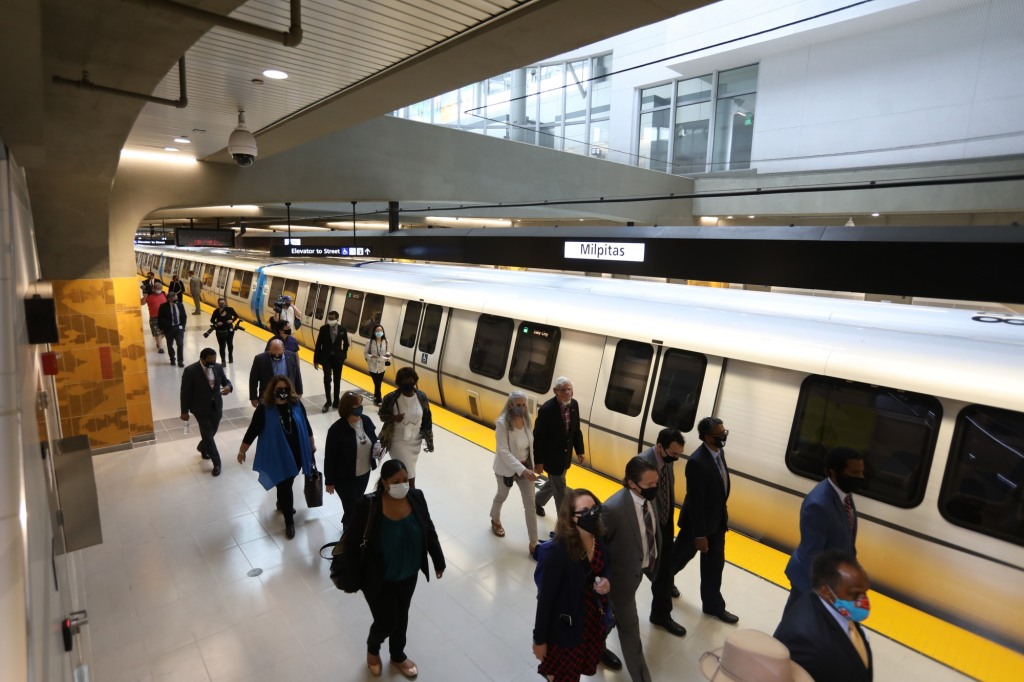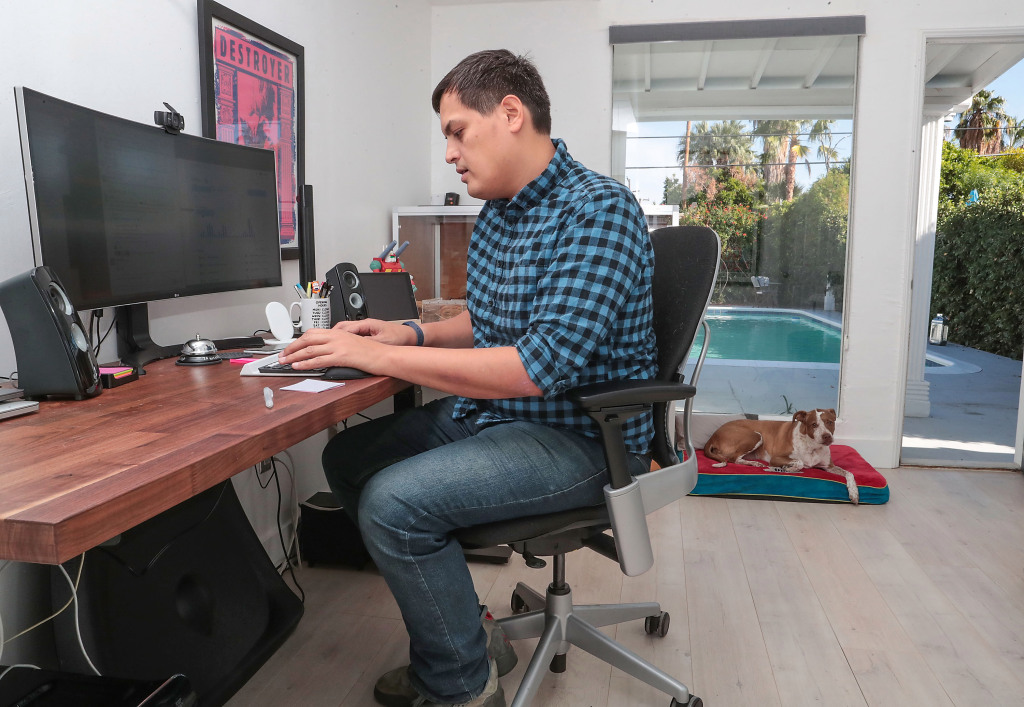In a bid to recapture a spark from the boom years of the 1980s to early 2000 when offices, warehouses and retail stores ballooned from 2 million square feet to 20 million, Milpitas city officials are planning to create an “innovation district” that will give other Silicon Valley cities a run for their business.
As envisioned, the 74-acre district would encompass the new BART station and VTA bus lines and be anchored by a major tech company that brings in thousands of high-paying jobs. Warehouse, retail, industrial or hotel spaces could all be part of the plan, which is still in the early stages and lays out four scenarios. Only one of those scenarios includes residential development, on 5% of the site.
But during a recent City Council discussion of the Milpitas Metro Specific Plan, the premise of an innovation district that hinges substantially on demand for office and retail space was questioned.
The pandemic has prompted many businesses to consider permanently allowing at least some workers to stay home, it was pointed out, and e-commerce had already put a big dent in brick and mortar retail before anyone ever heard of COVID-19.
Councilmember Evelyn Chua raised the work-from-home issue at the council’s Oct. 12 meeting, noting that a continuation of that trend could impede the district’s growth if planners focus too heavily on office space.
“Personally, I don’t think it (working from home) is going to go away,” Chua said after the meeting.
A few months ago, Cisco — Milpitas’ largest employer — signaled that it would be offering a “hybrid” work environment, allowing employees and their managers to decide how and where each staffer will work.
Though he acknowledged that “commercial market conditions haven’t been favorable” for a long time, Milpitas economic development director Alex Andrade said he believes an innovation district could still thrive and generate anywhere from $6.5 million to $9.9 million in property taxes.
He blamed the malaise on low lease rates and stringent parking requirements that scared away potential developers who didn’t see much opportunity for a good return on their investment.
He and others in the economic development office say conditions are becoming ripe again for commercial growth in the city, which today has more than 80,000 residents.
Development has pushed east of Highway 237, cutting into Milpitas’ west side. And the new BART station, which opened June 2020 in the city’s southern end, could attract more workers from around the Bay Area, they say
Daniel Degu, a member of city team that’s been developing the plan, said even if some employees continue working from home after the pandemic, that shouldn’t sink an innovation district.
“We are seeing work-from-home as a short term kind of thing, not something that will be in perpetuity,” Degu said. “We will see (office work) eventually come back.”
In early October, commercial real estate firm Colliers reported that office rent in Silicon Valley reached an average of $5.35 per square foot, the highest on record.
At about the same time, Amazon bought a 29-acre office for $123 million just a few blocks north of where the innovation district is planned.
And on Oct. 22, a Seattle-based buyer purchased a 14-building, 690,000-square-foot office and research complex in Milpitas for $170 million.
Still, the road back for full-fledged office development may be a rocky one. Data from the commercial real estate firm JLL indicates that leasing numbers in the United States are half of what they normally were before the pandemic.
As for the challenges that brick-and-mortar stores face from e-commerce giants like Amazon, Degu said retail could hold them at bay if oriented more toward entertainment to attract customers. For example, he noted, Legoland Discovery Center Bay Area, which opened in June at the Great Mall, had drawn 50,000 people by August.

“From a retail perspective, e-commerce is here to stay,” Degu said. “But when you look at population, they want to have that interactive experience.”
So far, city officials haven’t identified a specific company to move into the district, but they have been offering tours to potential property owners and investors. The idea is to bring in between 2,000 to 14,200 new jobs.
Councilmember Anthony Phan said he doesn’t think working from home will last forever.
“Time will tell,” he said. “It is untested. However, I am of the belief that a lot of the trends we’re seeing are temporary. It is caused by the pandemic. There’s just a lot of things that can’t really fully be replaced. And in certain business models, having a physical office space might work better with their strategic goals. It really just depends on what kind of business it is.”
And even an empty office building has value, Phan said. “That still provides the opportunity for investors to come in.”
Prithwiraj Choudhury, an associate professor at Harvard Business School who has studied the future of work since 2015, said while he does think work-from-home trends are here to stay for the most part, it doesn’t necessarily mean there won’t be a need for office space.
Even work-from-home employees occasionally will be going into an office, he said.
“Which means that the office of the future should be designed very differently,” added Choudhury, who wrote an article in 2020 for the Harvard Business Review about the topic. “It should not be cubicle or private spaces. The future of the office is social.”










